This homemade Pumpernickel Bread is a rye bread that has a rich, slightly sweet flavor with a dense, hearty texture. I warmed up a slice and added a little butter, and it was delicious! I really love how the molasses stands out in each bite. It’s also perfect for sandwiches or alongside a bowl of soup or stew. If you’re looking for a lighter, more versatile bread, my homemade simple white bread recipe offers a soft, tender crumb that’s perfect for everyday use.
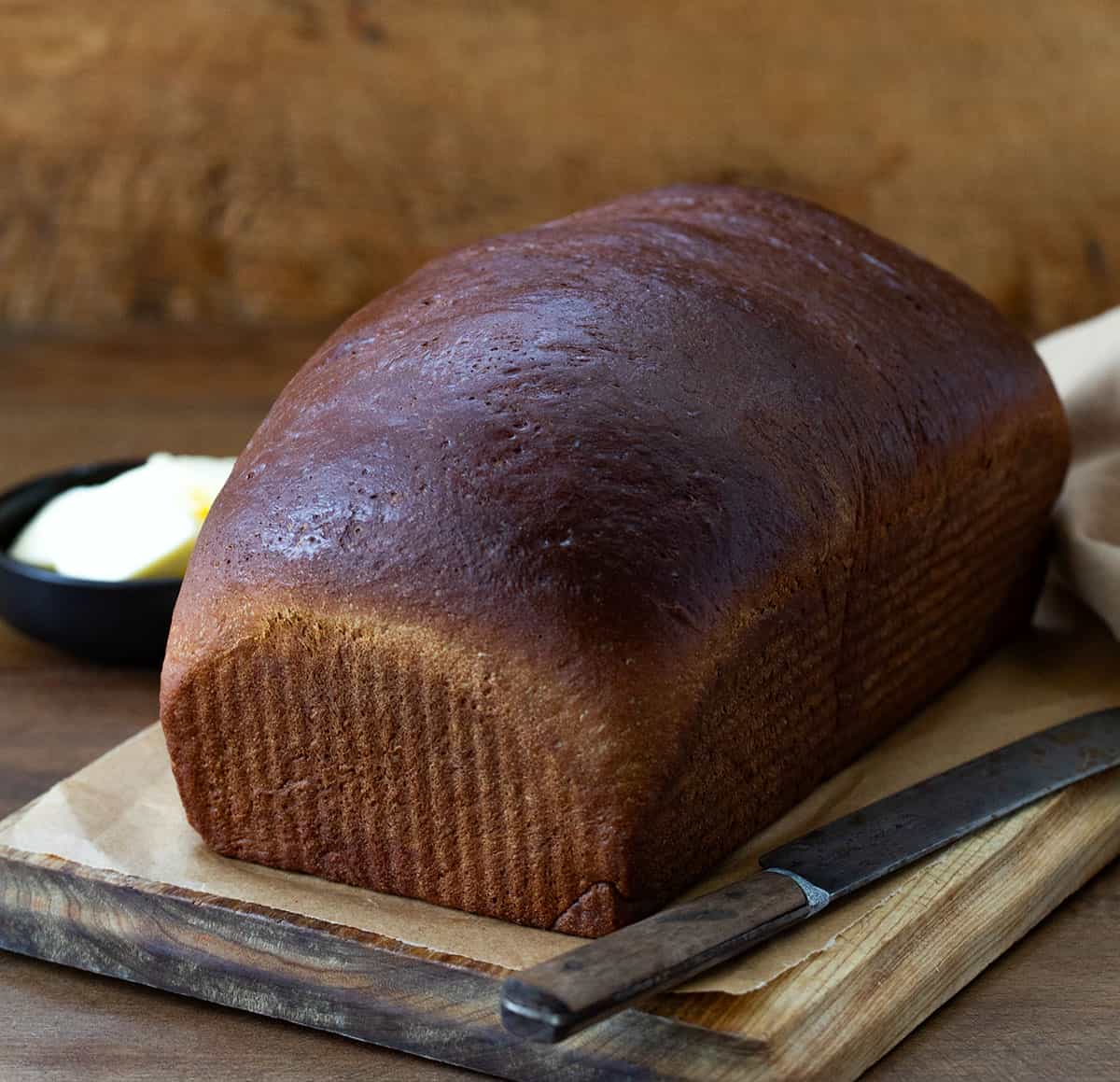
What Is Pumpernickel Bread?
Pumpernickel bread is a dark, dense rye bread traditionally made with coarse rye flour. It often involves a long, slow baking process, and can use a sourdough starter instead of yeast for the rise. This recipe is a more modern way to make pumpernickel bread, especially in the United States. It calls for a mix of flours and adds cocoa powder and molasses to make it taste richer and sweeter and give it that dark color pumpernickel bread is known for.
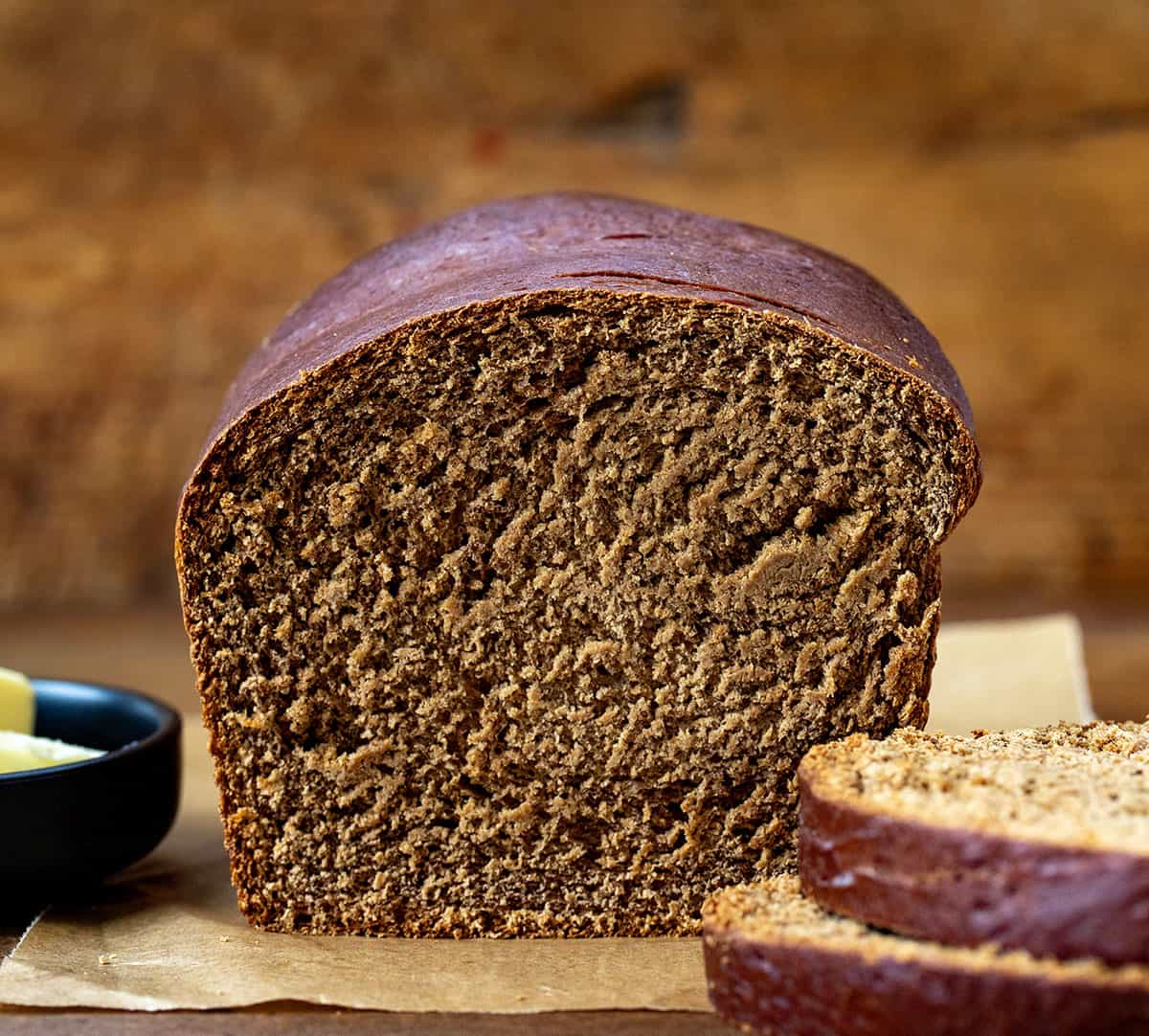
Ingredients & Substitutions
- All-Purpose Flour: The majority of the flour in this recipe is all-purpose. It gives the bread structure and helps balance the density of the bread. I mean, I love dense bread, but there is a limit–we don’t want it too heavy!
- Bread Flour: Bread flour has a higher protein content than all-purpose. This helps give the bread a chewier texture, which is perfect for a loaf like pumpernickel!
- Rye Flour: For the distinctive pumpernickel taste, we can’t leave out the rye flour! I used medium rye, but you could use light rye for a milder rye flavor. Or, if you don’t have any rye flour, you could substitute whole wheat flour.
- Cocoa Powder: Look for regular unsweetened cocoa powder. It helps give the bread its rich, deep color and adds a little flavor.
- Yeast: I like using instant yeast–just mix it with the flour, cocoa powder, sugar, and salt. No need to proof! The granulated sugar feeds the yeast while the tablespoon of kosher salt helps to keep the yeast ‘in check’, as I would say–slowing down the activation for a more uniform rise. And, make sure the water is between 105°F and 115°F.
- Molasses: I love tasting the molasses as it comes through in this bread. It also helps keep the bread moist and gives it a darker color. You could substitute honey or maple syrup, but the flavor and color of the bread will change.
- Oil: Vegetable oil helps soften the bread by adding moisture to the dough.
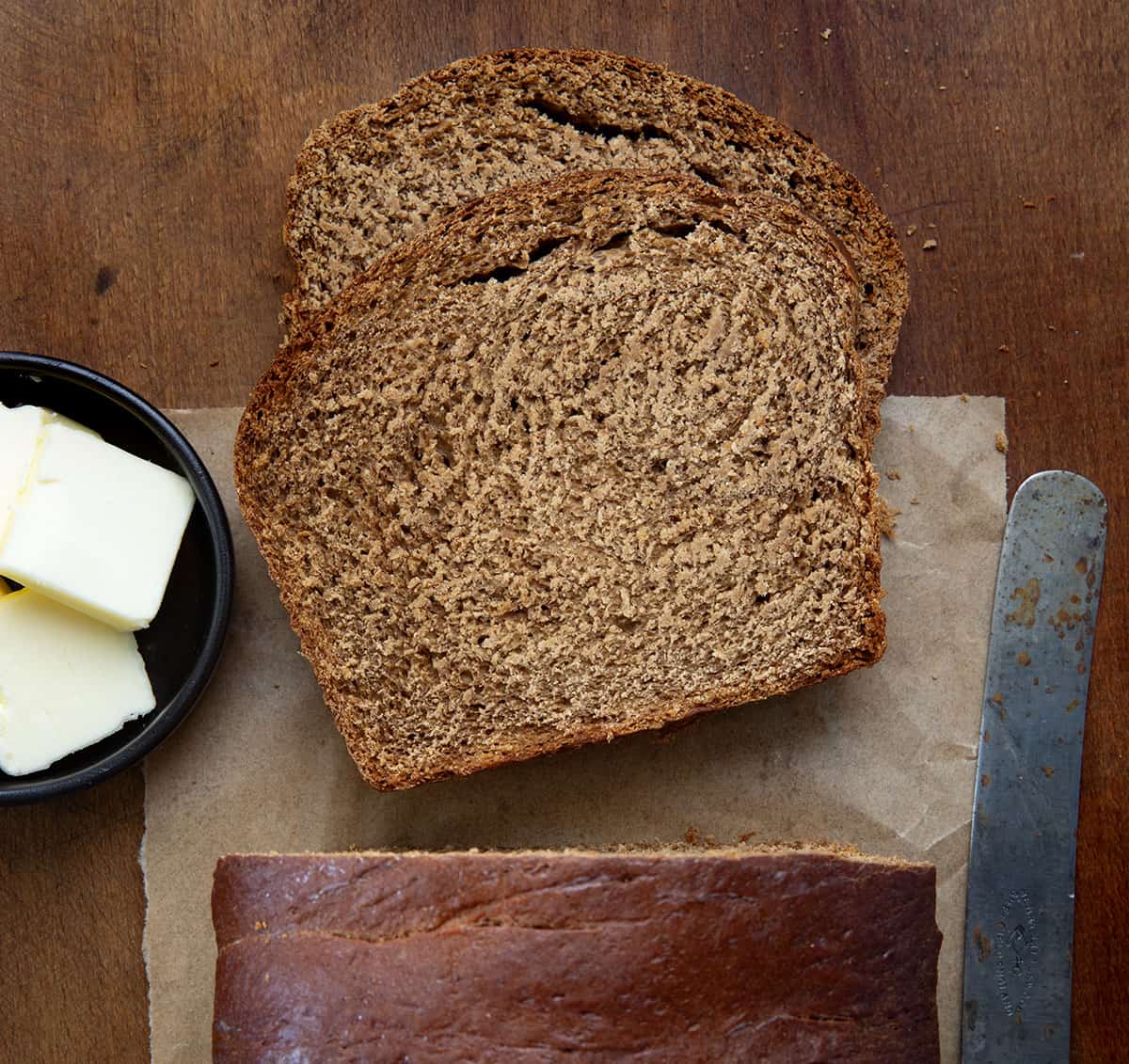
Can I Make Pumpernickel Bread In A Bread Machine?
Yes, but if using a bread machine, be sure to add the ingredients in the correct order (according to your machine). Then, if the machine has it, use the whole grain or rye bread setting. If not, use the basic or whole wheat cycle. Let me know how it turned out!
How To Store Pumpernickel Bread
If you are planning to eat the pumpernickel loaf within a few days, store it at room temperature. Here is how:
- Keep the bread in a dark place, away from sunlight. Wrap the loaf in plastic or aluminum foil.
- When you want to cut a slice of bread, first cut the loaf in half from the middle, not the end. After cutting a slice or two, put the two halves back together to keep the cut end from drying out.
- Eat the bread within 2-3 days. If you can’t finish it, the best option is to freeze it.
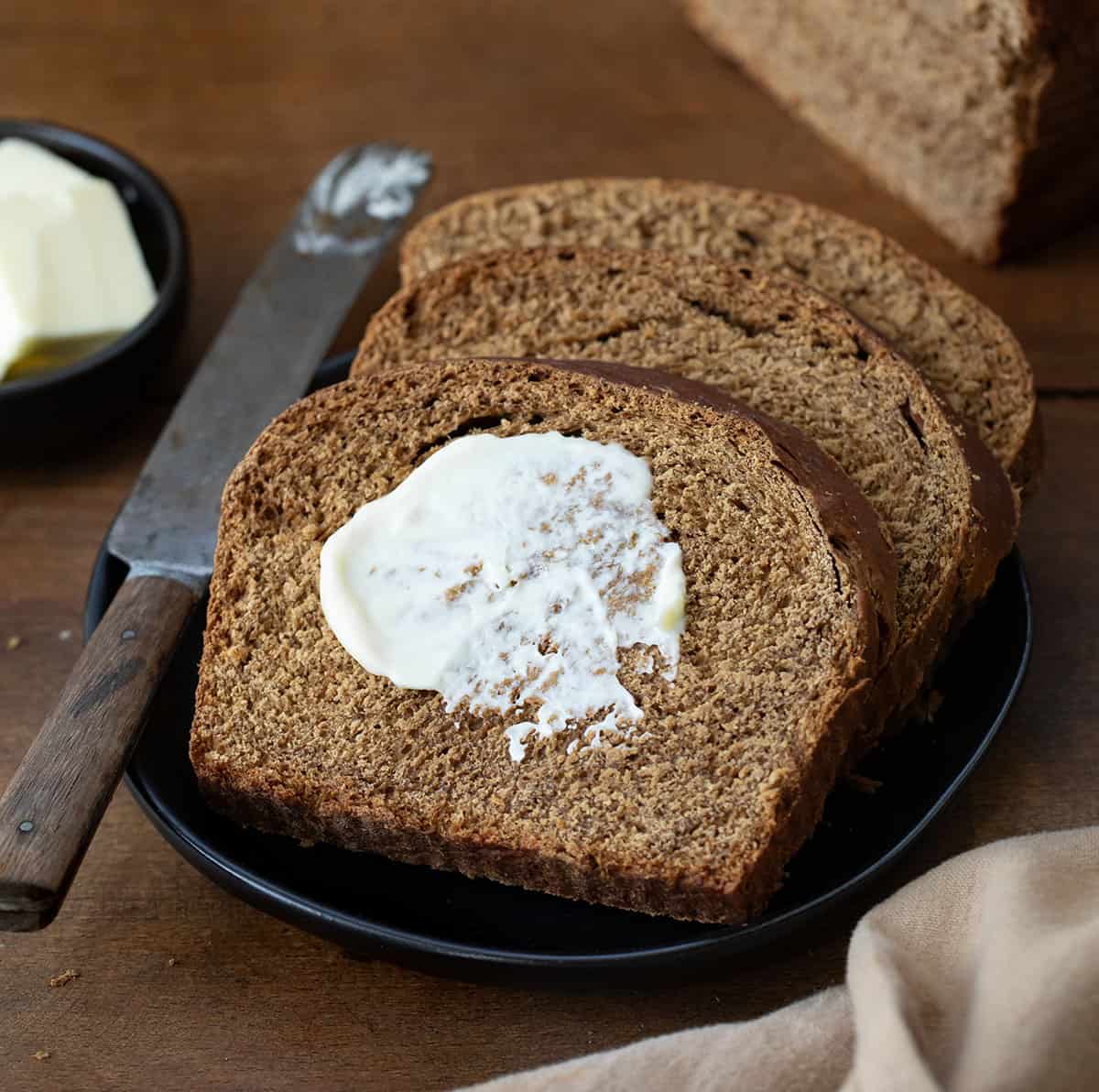
Freezing Bread
To freeze this pumpernickel bread:
- Let the bread cool completely.
- Wrap the loaf (or portion of the loaf) in plastic wrap; then, store it in a sealed plastic bag.
- Place the bread in a colder part of the freezer, away from the door.
When ready to enjoy the bread, remove it from the freezer and unwrap it. Store it in a zipped plastic bag at room temperature.
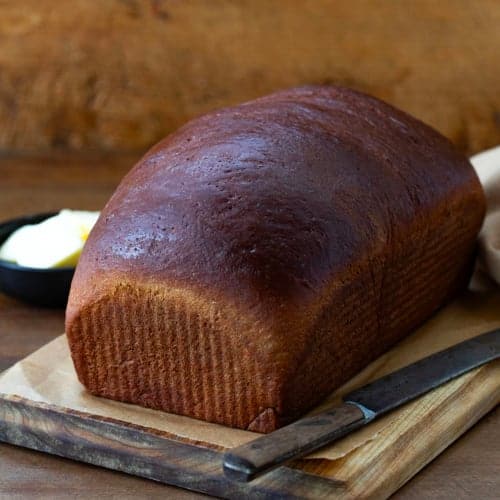
Pumpernickel Bread
Ingredients
- 2 ½ cups (312.5 g) all-purpose flour
- 1 cup (127 g) bread flour
- 1 cup (102 g) medium rye flour
- 2 tablespoons unsweetened cocoa powder
- 5 teaspoons instant yeast
- 1 tablespoon granulated sugar
- 1 tablespoon kosher salt
- 1 ½ cups warm water, 105°F-115°F
- ½ cup (168.5 g) molasses
- 2 tablespoons vegetable oil
Instructions
- Spray a 9×5-inch loaf pan with nonstick cooking spray. Set aside.
- To a large bowl, add all-purpose flour, bread flour, rye flour, cocoa powder, yeast, sugar, and salt. Whisk to combine.
- In the bowl of a stand mixer fitted with a dough hook attachment, mix together the warm water, molasses, and vegetable oil.
- Gradually add the dry ingredients to the wet ingredients. Mix on low speed until a dough forms, 1-2 minutes.
- Knead for 5-8 minutes, until the dough is smooth and elastic. Alternatively, you can turn the dough out onto a lightly floured surface and hand knead for about 8-10 minutes.
- Place the dough in a large, clean, oiled bowl and cover. Let it rise in a warm place until doubled in size, about 60-90 minutes.
- Once the dough has risen, roll it out onto a lightly floured work surface. Flatten the dough into a rectangle, roughly the width of the loaf pan.
- Starting at the short end, roll the dough tightly to form a log, pinching the seams as you go to create a tight surface.
- Place the rolled dough seam-side down into the prepared pan.
- Cover and let the dough rise in a warm place until it has doubled in size, about 45 minutes.
- Preheat oven to 375°F (190°C) as the dough completes its second rise.
- Bake the loaf for about 50-55 minutes, or until the bread sounds hollow when tapped.
- Remove the bread from the oven. Let it cool completely on a wire rack before slicing.
- Store the bread at room temperature for up to 3 days or freeze for up to 8 weeks.
Did you make this recipe?
Thank you for making my recipe! You took pictures, right? Well go ahead and post them on Instagram! Be sure to mention me @iambaker and use the hashtag #YouAreBaker.
What the Test Kitchen had to say about this recipe:

Autumn
This was good! I like how the recipe is pretty straightforward and the texture is dense and chewy.

Elizabeth
Oh, wow, I loved this bread! It was nice and dense (which I love) and had the subtle molasses/rye flavor.

Annabelle
On it's own, I thought it was lacking in flavor a bit, but toasted, with a little butter, it was great!

Bella
This was the first times I tried pumpernickel bread, and kind of liked it! It wasn't too strong in taste, which I thought it might be.

Selena
I can't wait to use this bread for sandwiches! Easy to make and deliciously dense!
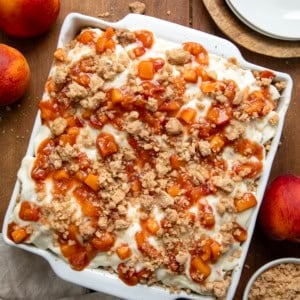
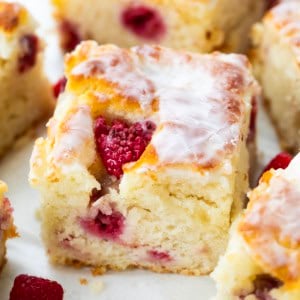
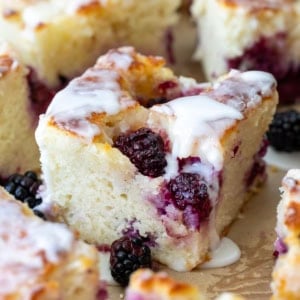
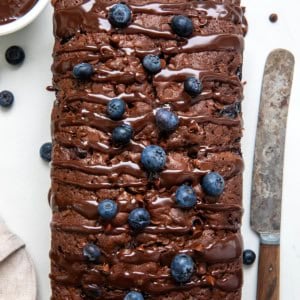







Pumpernickel is the best bread Just Like My Grandma She Loved It Too. Keep the recipes coming…
You Can’t Beat A Warm Slice Of Pumpernickel Bread
I grew up with Pumpernickel bread, my mother and us 6 kids would go to the local bakery to pick up two loaves. We only made it home with 1 loaf, it was a 10 minute drive and we ate the whole loaf. I have been wanting to make some and now I think I will . I do have a question. Can I put it in a dutch oven to make it chewy on the outside. Thanks Lynda
Sure! The shape will be different and you’ll want to keep an eye on baking times. 🙂
Does this make 1 loaf or 2? There are references to a loaf pan and also letting the loaves bake. Recipes with similar ingredients specify 2 loaves. Going to try it tomorrow. Thanks.
Hi, Robert! I work with iambaker and am happy to help with your question. This recipe makes one loaf; sorry for any confusion. Have a wonderful day, and enjoy your freshly baked bread!
I don’t know, my addition makes it around 2.7 pounds. (1200 grams) That’s a little large for a 9×5 pan unless it’s REALLY dense and doesn’t rise much. I’m going to try it for my next bake and see how it works out.
hi, did you use unbleached flour? or bleached. I am trying to get started making the bread 🙂
I love the flow and order of the instructions on your recipe. Thank you 🤩
Going to make this but can I mix everything in my bread maker on dough cycle and then shape ands bake it in regular oven?
Hi just waiting for the final rise and couldn’t help but worry the bake time seems very long. Most recipes have baking time for 30-35 minutes at 375. I will check it at 30 minutes but just curious. Thanks 😊
Perfection! Didn’t know I was out of pickles, but I had kraut! Used kraut juice and it was delicious. Will get some pickles for the next batch. This may have been the best loaf of any bread I have ever made. I will make it often! Thank you!!!
Novice baker here with a question
The dough seemed to sticky and the other breads I’ve been making the dough curls around the hook and pulls away from the sides of the bowl…is it okay to keep adding tbsp flour until this happens?
Hello!
After Saaristolaisleipä (Finland) this bread is my favourite. Thank You for sharing recipe.
Made this in a bread machine. Nice texture, flavor was great, but way too much yeast. I will retry this but with only 1.5 teaspoons this time. Got huge with the recommended amount.